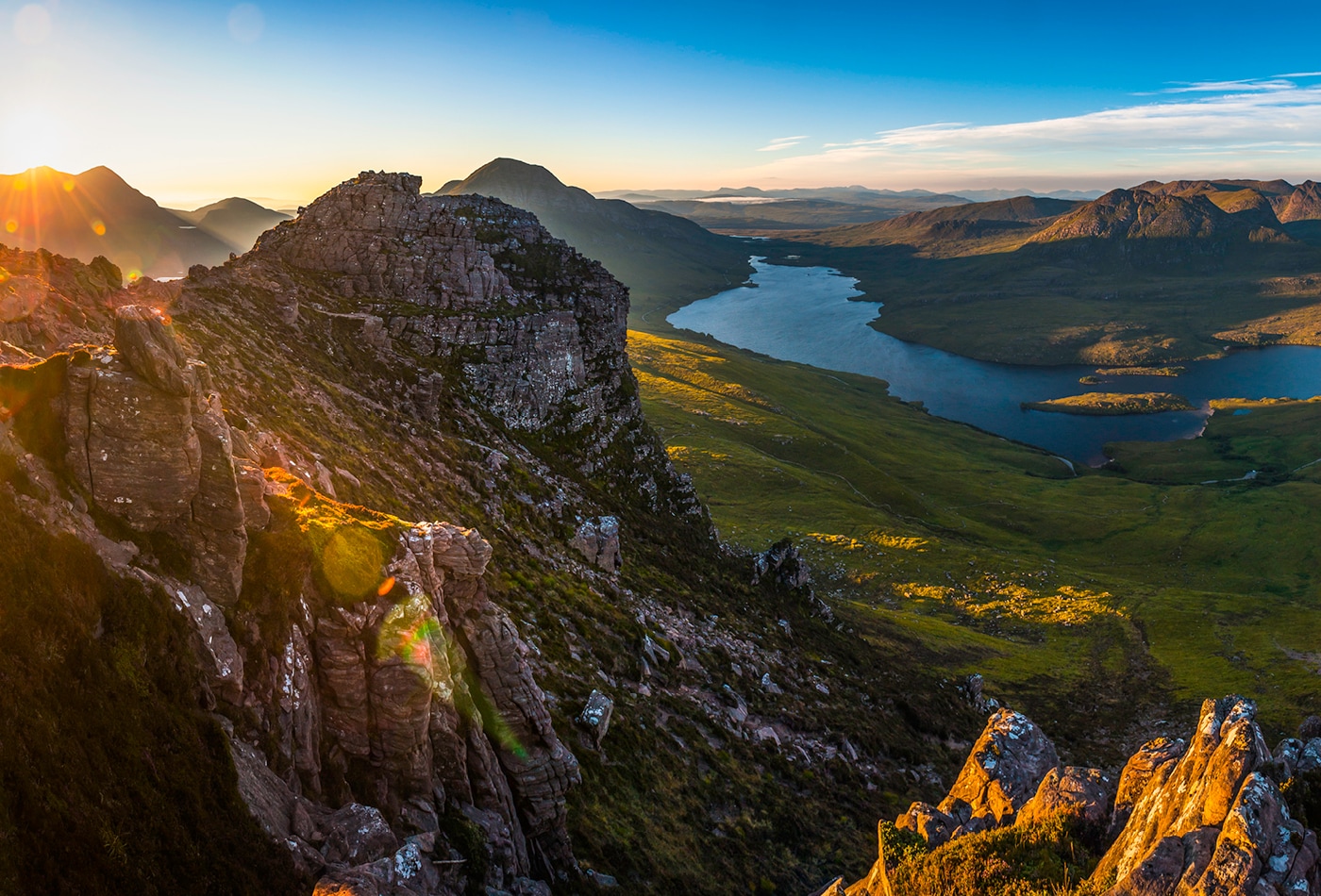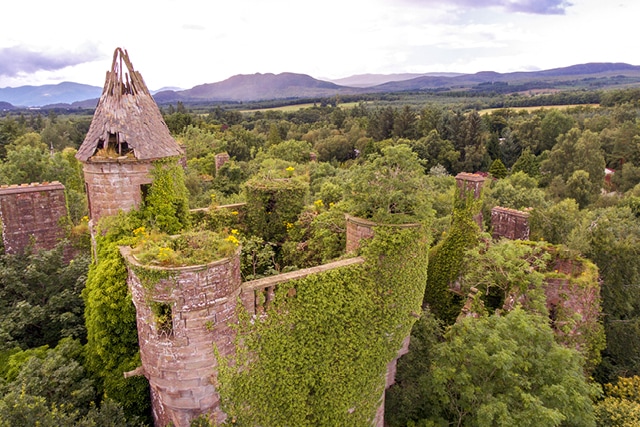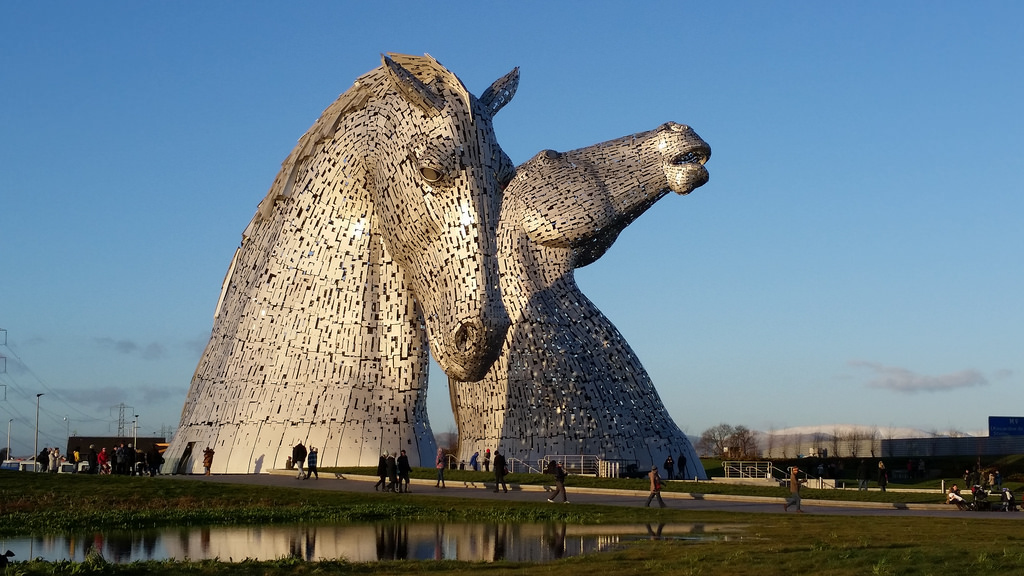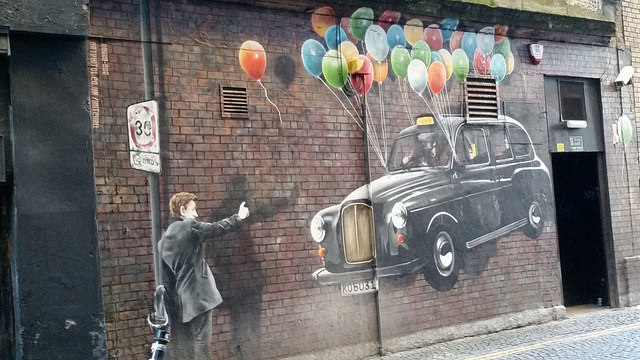The Best Places for UK Short Breaks in 2025
If you've been wondering where the best place to for a weekend break in the UK is, then you're...

Discover some of the most unusual attractions in Scotland, each leading you off the beaten track to something quite unexpected.
Covering the northern third of Great Britain, with its towering rock, deep blue waters and vast skies, is the wondrous region of Scotland that we all know and love. But, are you yet to explore just what beautiful treasures lie hidden between its boundless areas of wilderness?
Its long, multi-layered history and stunning scenery, combined with walking trails begging to be climbed, are all awaiting your discovery.
Look no further to find 7 of our favourite hidden gems throughout Scotland…

Scotland is steeped in Celtic myths and legends, telling tales of magical beings and enchanted beasts of all shapes and sizes. Nestled at the foot of the Black Cuillins on the Isle of Skye, are these famous natural pools, embodying the same charm as folklore.
Glen Brittle Forest leads the way on foot, to a sequence of waterfalls tumbling into unbelievably blue pools, enticing visitors with its wild swimming appeal.
Glimpse the moss-covered stone through clear waters on a sun-filled day and then listen to the crashing sounds of the torrents overflow after a rainy spell.
Within easy reach of one of Scotland’s most abiding natural wonders, you can enjoy one of our cosy Portree cottage holidays.

The historic ruins of Buchanan Castle are hidden beneath a wild overgrowth of creeping plants, with many secrets and stories wrapped up within its still-standing walls.
This once stately home, belonging to a family of royal dukes, dates back to the 19th century, when it was rebuilt for the Montrose family after a devastating fire. It’s baronial structure, with spear-like towers and asymmetrical design was a revived style of architecture at the time of reconstruction, now becoming lost in an abundance of wildlife.
During World War II, the castle was offered to the war effort, to be used as a hospital for the sick and injured. During this time, its walls saw numerous wounded soldiers, the most famous being Hitler’s right hand man, Rudolph Hess. Since the war, it has been used as a school for a short period, before being left to the hands of nature.
There is still a golf course on the premises, which overlooks the castle grounds, but it won’t be long before the whole building is completely concealed.

This spectacular viewpoint was once known to be a favourite resting spot of Sir Walter Scott, where he could stop and simply be at one with his thoughts.
He would often climb on horseback and pause to admire the scenery before him, so much so, his horses learned to halt without command. After he died, it is said that when his funeral procession passed this point, his horses stopped out of habit, allowing Sir Scott to enjoy one final glimpse of the land he was so fond of.
Interestingly, this flat landscape was once the site of the first Melrose Abbey, the remains of which have long since disappeared. You can reach this outlook by car along the B6356, following signs for Dryburgh Abbey, before coming to the signpost for Scott’s View at a junction about 1 mile along.

This obscure footbridge, at high tide, appears to have no purpose at all, but to haunt the gloomy waters encompassing it.
However, this mysterious structure does actually lead somewhere. It is used by amblers crossing the Biel Water, which babbles through village of Biel, just South of Dunbar, hurriedly making its way to Belhaven Bay. Before it unburdens its waters into the North Sea, it drifts under a small, metal footbridge.
When the tide is low, you can use this bridge to access the beach beyond, but once the water surges back to shore, it becomes suddenly impossible to cross without having to swim!
Don’t forget to take your cameras with you, this lonely bridge swamped by rippling sea, makes an astounding photograph to take home with you.

Hiding behind a 12th century church, in the pretty village of Duddingston, is one of Scotland’s most remarkable gardens, inspiring artists for centuries.
Sometimes known as Edinburgh’s Secret Garden, this marvellous creation from a wilderness is down to the hard-work and imagination of Dr’s Andrew and Nancy Neil.
It was constructed in the 1960s, with the help of some of their patients seeking fresh air and physical activity. Hosting conifers, heathers and alpines, with primulas and magnolias adding a riot of colour, these landscaped grounds are a remarkable sight. Features of particular interest include Thomson’s Tower, built in 1825, housing stones for the Duddingston Curling Society, along with the physic garden, growing medicinal plants.
Today, the grounds are run and maintained by volunteers and still beckon the likes of artists, writers and meditators. These gardens are free to enter for the public, seven days a week, from 10am to dusk.
Edinburgh offers plenty to see and do, making it one of the best destination for a UK short break.

As Scottish folklore goes, the kelpie, or water kelpie is a shape-shifting water spirit occupying the lochs of the land. Almost every body of water in Scotland is associated with a story of a kelpie, the most notable being Loch Ness.
These mythological, transforming beasts, which usually take the form of a horse, honour the Scottish history in a contemporary art exhibit in Falkirk. At night, they illuminate the area surrounding them with a bright red light shining through the holes in their steel plates.
The Helix is the parkland home to these mysterious creatures, an innovative space constructed in 2013, for the communities of Falkirk and Grangemouth. Not only that, they attract tourists from all over the world interested in their story and imposing structures.
Positioned at 100ft tall and weighing over 300 tonnes each, these magical, man-made triumphs of engineering create a beautiful sense of awe and wonder. You can even step inside one of them and take a closer look at how they are built.
Your journey doesn’t have to end here either, the park also offers many cycle routes and foot paths, allowing you to discover many other attractions in Falkirk.
Don’t take our word for it, visit these giant heads and explore their ingenuity for yourselves!

This compelling art trail winds its way through the city centre of Glasgow, covering its walls and buildings with splashes of colour and imaginative design.
From a large bearded man gazing down at a bird, to a fanciful taxi floating from a bunch of colourful balloons, these murals fill the city streets with life. It is an opportunity for graffiti artists to showcase their creative talents and visitors to explore the city following a map of whimsical creation.
A good place to start your route is on Mitchell Street adjacent to Glasgow’s Style Mile, where you will also find an image of a large girl with a magnifying glass, seemingly plucking tiny people off the street.
Then head to East End to discover ‘The Barras Pirate’ and you can’t miss the Argyle Street Café, where a zebra converses with a stag at the bar, as a shark gets through seven glasses of his favourite tipple!
These murals rejuvenate the gloomy spaces of Glasgow, promoting the craftsmanship of graffiti legends in almost every corner. So grab your walking boots and keep your eyes peeled, some can be hard to find!
Image Credits: Jonathan Combe – (CC BY 2.0); Jake Cook – (CC BY 2.0); M J Richardson – (CC BY-SA 2.0); Michel Curi – (CC BY 2.0); Michel Curi – (CC BY 2.0)
Are you on the phone to our call centre? Your Customer ID is:
Get involved in the Discussion